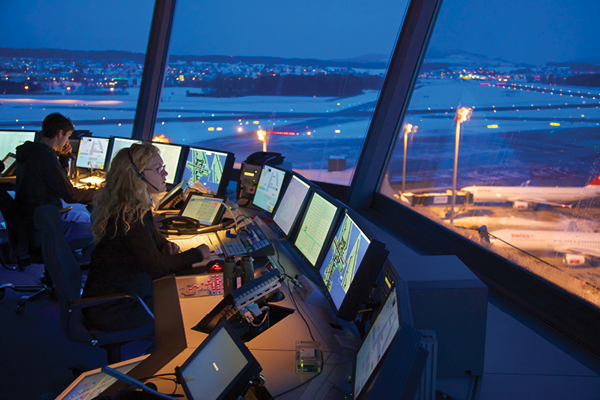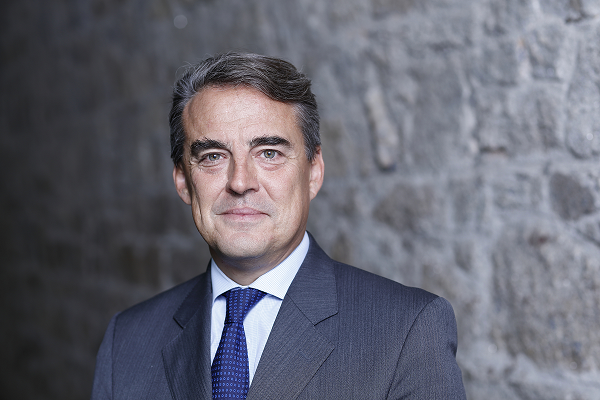Airspace Q3 2019 – Fit for the future of ATM

New CANSO Director General, Simon Hocquard, explains why a member-focused strategy will give CANSO an even stronger voice.
What will you bring to the role of CANSO Director General?
My background has certainly focused my thinking on what I believe are the priorities for the ATM industry and for CANSO. I worked as a controller (many years ago), and also held a variety of operational and senior management positions in NATS dealing with strategic and aero political issues. There is also my position as Chairman Network Management Board in Europe and as a member of the Wise Persons Group, as well as two years working at CANSO seeing ATM around the world close up.
It is an incredible honour to lead this organisation. Understanding what our members need by listening to them will be at the heart of everything we do. Alongside the member-centric approach will be a renewed focus on strong industry advocacy and communications as well as an emphasis on regional support.
CANSO today is ready to take the necessary steps to deliver these goals. The organisation is in good shape and there is an excellent foundation for our work going forward. My task is to ensure CANSO is ahead of the curve; that it is, and remains, relevant.
How can ATM be made more visible to governments and stakeholders?
CANSO is established as the global and regional voice of air traffic management (ATM) but it is important we get governments and other partners in the aviation value chain to really listen to and act on that voice. We have to make sure that when governments or partners have a question about ATM, they know CANSO is the organisation to turn to for an answer. We must ensure CANSO is the first port of call.
That is why I am putting a greater focus on communications than we have in the past. We need a bigger presence to achieve that. We will need to increase our digital presence as well as our physical presence. That means doing more online and getting out to the regions as much as possible.
CANSO must be in a position to influence policy across the globe for the benefit of its members. It has to get across its messages, explain its positions, broadcast its expertise and insight. And that can’t come just from me. All CANSO staff must be involved in this communications push, as well as members, our workgroups and task forces, and our industry partners. For example, when we make the case for investing in and modernising ATM infrastructure, our industry partners should also convey the same messages to governments. All will consequently benefit.
What are your regional priorities for CANSO?
Regionally, we have to talk authoritatively about the important issues and there must be a strong member focus in our dialogue. Importantly, we must remember that is not one-size-fits-all but solutions can be tailor-made.
For example, in South America, CANSO is doing a lot of work, especially on performance-based navigation (PBN) and air traffic flow management (ATFM), from which everybody can benefit. To maximise those benefits, I am looking to increase membership as much as possible.
In Africa, the Mombasa Roadmap on implementing ATFM is an excellent initiative for the entire continent that has to be delivered and the Africa ATM Safety Peer Review Initiative is improving safety standards. In Asia Pacific, we are concentrating on a regional training collaboration initiative aimed at further enhancing different aspects of ATM through training and human resource development.
The Middle East is about getting countries to work together, and it will be important to bring operations together in an environment where everybody can learn from each other. Europe, meanwhile, is all about advocacy. The ANSPs in the region don’t necessarily need too much technical help but they certainly need CANSO to be involved in, and influencing, policy debates.
What technologies will come to the fore?
In terms of technologies, CANSO can provide the all-important strategic overview. Our Fit for the Future initiative is exploring technologies that could be adapted for ATM.
People know about the technologies that are already transforming the industry, such as space-based surveillance and digital towers, but we also need to look beyond the horizon and beyond the boundaries of ATM. CANSO can let its members know what is coming. Blockchain has enormous potential, for example, and how it works with system wide information management (SWIM) will be a really interesting development. It should let everybody see the same picture at the same time. Big data will enable levels of analysis that will improve flight efficiency.
I think the industry is in an exciting place right now. These new technologies will bring an entirely new way of thinking. How air traffic moves through airspace is going to change. And the ATM industry needs to be at the forefront of that change because if we don’t do it, there is a danger that somebody else will.
Will drones and space travel have an impact?
Certainly. Anything that travels through the air needs ATM in one form or another. We all know that the emergence of new, diverse airspace users is a challenge but one we are rising to. I think we have been absolutely right to welcome all new airspace users and to seek ways to safely accommodate them.
The key is working with the new users to find solutions. For example, I am delighted that several UAS traffic management (UTM) organisations have joined CANSO as members and we are working with the UTM industry to ensure that UTM is interoperable with existing ATM. We are also leading the ICAO UAS Steering Group to ensure regulation is appropriate and effective.
Regarding space travel, we are also working with ICAO and others to safely integrate operations in and through controlled airspace for space vehicles.
Will the evolution of ANSP business models be significant to the industry’s development?
Different business models are appropriate to different places and countries. Again, there is no one-size-fits-all. It is the output from the business model that is important and not the business model itself. CANSO is happy to support any model that has the right output.
And though we might use the phrase “market-based” that does not have to mean privatisation. That just means that there should be some form of performance contract with customers and suppliers and a focus on output.
Isn’t the level of investment affected by the business model?
The only time the business model comes into play is when it is an obvious obstruction to the right level of investment and the right output.
The industry certainly needs to improve the level of investment in infrastructure but CANSO will provide support for every ANSP member regardless of the business model. It is important to be pragmatic and find the best way forward for each ANSP. That is how you remain relevant.
Can you tally pragmatism with partnership and harmonisation, which are so important to solving industry issues?
The concepts work perfectly together. The industry definitely needs partnerships and harmonisation because they are about promoting and implementing best practices and the process and procedures that create seamless operations.
They are not, however, about ANSP A and ANSP B necessarily using the same technologies and the same business model.
Partnership and harmonisation work through the sharing of knowledge and data and the best way to ensure you are in a position to share those abilities is by doing what is right for you. Again, it is about the output. How you get there will be different for each ANSP.
Is CANSO doing enough to encourage gender diversity?
Among CANSO staff, we have more women than men right now. However, across the aviation industry, women are under-represented. CANSO has collaborated in a global study on women in leadership with other industry bodies and Korn Ferry, which has produced a report, Soaring through the Glass Ceiling (see page 14).
This initiative will determine how the aviation and aerospace industries can more effectively recruit and advance women into leadership roles. Encouraging greater participation by women in the industry is an important goal for CANSO and its members.
How can the industry get its environmental message across to the public?
There is no doubt that the environmental debate is heating up again. The industry needs to be constantly vigilant to ensure it is always doing everything it can to address its environmental impact.
All the measures we take to improve efficiency, shorten routes and reduce delays save emissions and we need to ensure we position procedures such as free route airspace, PBN, ATFM and others as environmental measures.
I would like to get to a point where airspace infrastructure and air traffic management is not a factor in the environmental debate. That means being able to fly airspace users from point A to point B using the most efficient path possible with no constraints. To get there will take hard work every day.
It is that kind of effort that will ultimately win the environmental debate. In addition, we will continue to work with ATAG and other industry associations to present a cross-industry approach to tackling the climate change impacts of aviation.



